The status of our internet connection.
This shows the speed (latency) of our connection in green. It also shows how errors on the line (packet loss) in red, any red means the line is down.
What is Latency?
People often make the mistake of confusing internet speed for bandwidth. It’s not their fault, though. Internet service providers claim that their connections are as fast as 35 Mbps, or that their speeds are 20% faster than their competitors. But the truth is that your 25 Mpbs connection has little to do with speed, and more to do with how much data you can receive every second.
True internet speeds comes down to a combination of bandwidth and latency. Latency is the time taken sending a pice of data down the connection. Latency is usually measured in milliseconds or ms. It’s also referred to (during speed tests) as a ping rate.
How is Latency Different from Bandwidth?
Well, for one thing latency is a way to measure speed. Ironically, bandwidth isn’t, despite the fact that everyone refers to bandwidth as speed. Bandwidth is how wide or narrow a pipe is.
Latency is how fast it data moves from one end to the next.
Latency and Bandwidth – Cause and Effect
Latency and bandwidth are related, a a low latency connection can pass more data per second. It is not the case that a high bandwidth connection is fast - with a low latency. When a line is getting busy the latency goes up as data is held in a queue and has to wait to be sent. The effect is that browsing the web takes longer as each bit of the page gets delayed as it is sent to you. Skype and such like really suffer from high latency.
What is a Good Latency?
A good figure for latency in general is anything under 100ms. Given the distances involved at Letheringham Lodge we can not expect it to be lower than 10 ms.
